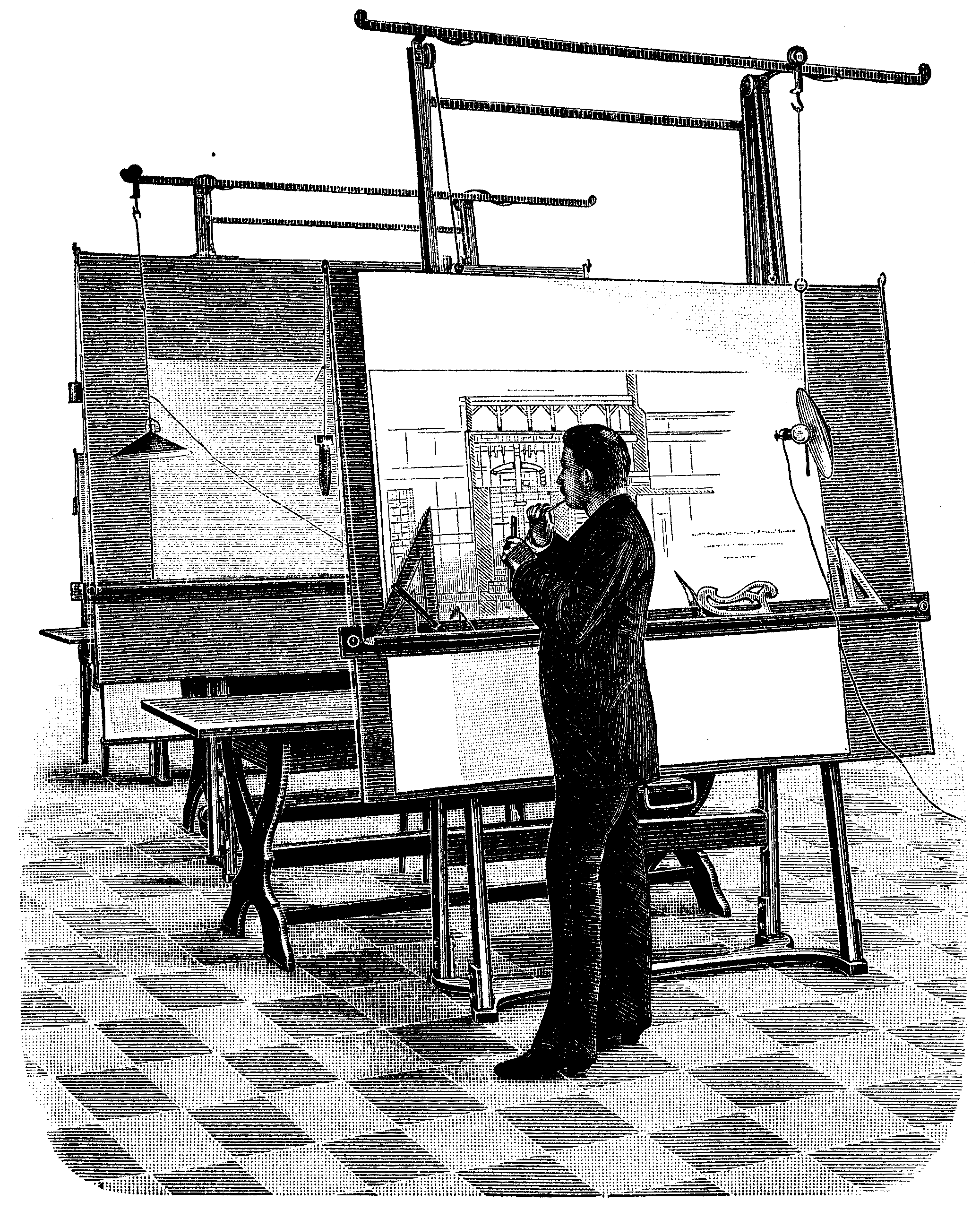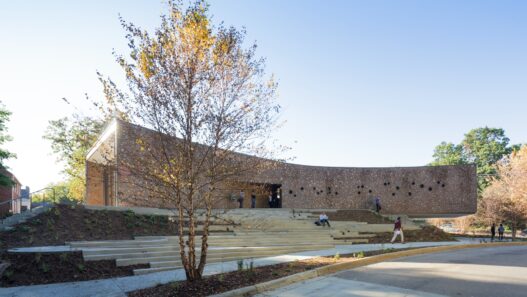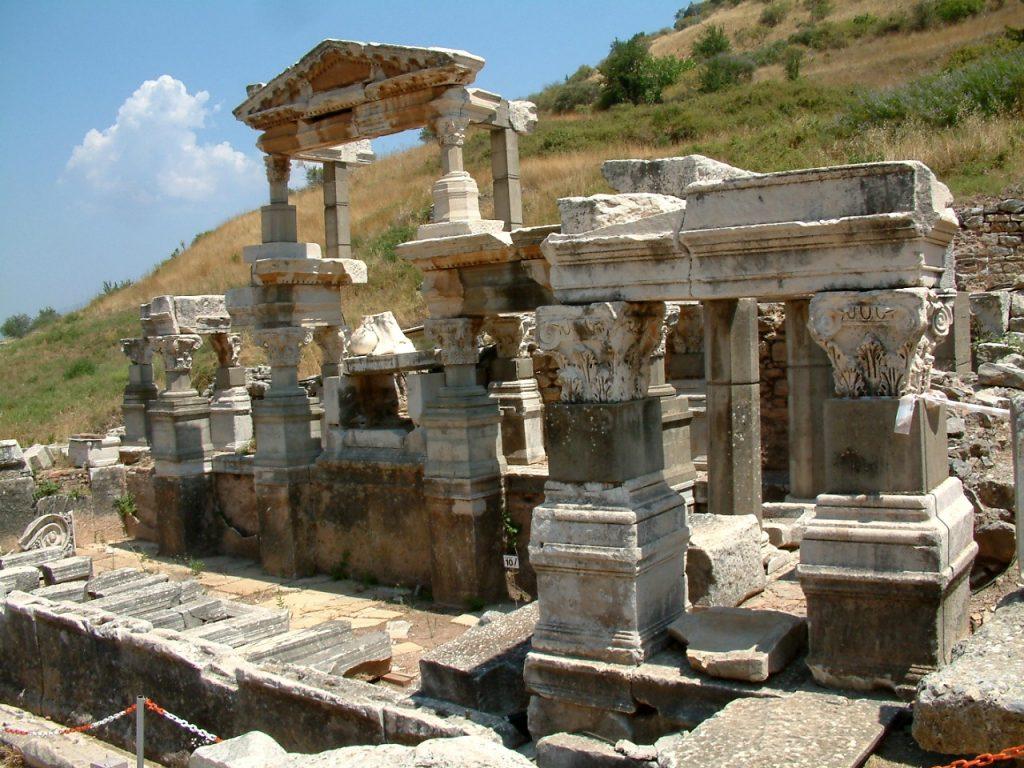The ancient city of Ephesus is of great historical and cultural importance and attracts tourists from all over the world. Located on the western coast of Anatolia, on the shores of the Aegean Sea, this ancient city was founded in the 10th century BC and has a history that stretches from the Ancient Greek period to the Roman Empire. In particular, it flourished as a major port city in the 6th century BC and became one of the most important trade centers of the Eastern Mediterranean. During this period, Ephesus also witnessed great architectural developments and hosted many important buildings such as the world-famous Temple of Artemis.
The importance of Ephesus is not only historical but also cultural. In addition to the ruins of ancient Greek and Roman times, it also played a major role in the history of Christianity. It is believed that St. Paul came to Ephesus and spread Christianity here, and the city became an important center of early Christianity. For this reason, there are many important Christian buildings and ruins in Ephesus, the most famous of which is the Basilica of St. John.
Today, the ancient city of Ephesus offers its visitors a rich historical and cultural heritage. Wandering among the ancient ruins, tracing the traces of the past and examining the historical buildings offer an unforgettable experience for tourists. The impressive scenery of Ephesus and the surrounding natural beauties also attract visitors. Located in the Aegean region of Turkey, this ancient city welcomes millions of tourists every year with its warm climate and rich cultural fabric.
- Historical Significance: The ancient city of Ephesus is located on the western coast of Anatolia, on the shores of the Aegean Sea and was founded in the 10th century BC.
- Ancient Port City: Ephesus flourished as a major port city in the 6th century BC and became one of the most important trade centers of the Eastern Mediterranean.
- Architectural Development: Ephesus was enriched with world-famous buildings such as the Temple of Artemis and witnessed great architectural developments.
- History of Christianity: The city became an important center in the history of Christianity when St. Paul came to Ephesus to spread Christianity.
- Basilica of St. John: The Basilica of St. John, which is one of the important structures related to Christianity, is one of the most important places to visit in Ephesus.
- Rich Cultural Heritage: Ephesus has not only a historical but also a rich cultural heritage and stands out with its ruins from different periods.
- Tourist Attractiveness: Attracting tourists from around the world, Ephesus is famous for its ancient ruins as well as its impressive scenery and natural beauty.
- Visitor Experience: A visit to Ephesus offers a unique opportunity to trace the past and explore ancient structures.
- Geographical Location: Located in the Aegean region of Turkey, Ephesus welcomes millions of visitors every year with its warm climate and historical texture.
- Fascinating Lifestyle: Ephesus’ rich history and vibrant culture offer visitors an unforgettable experience.
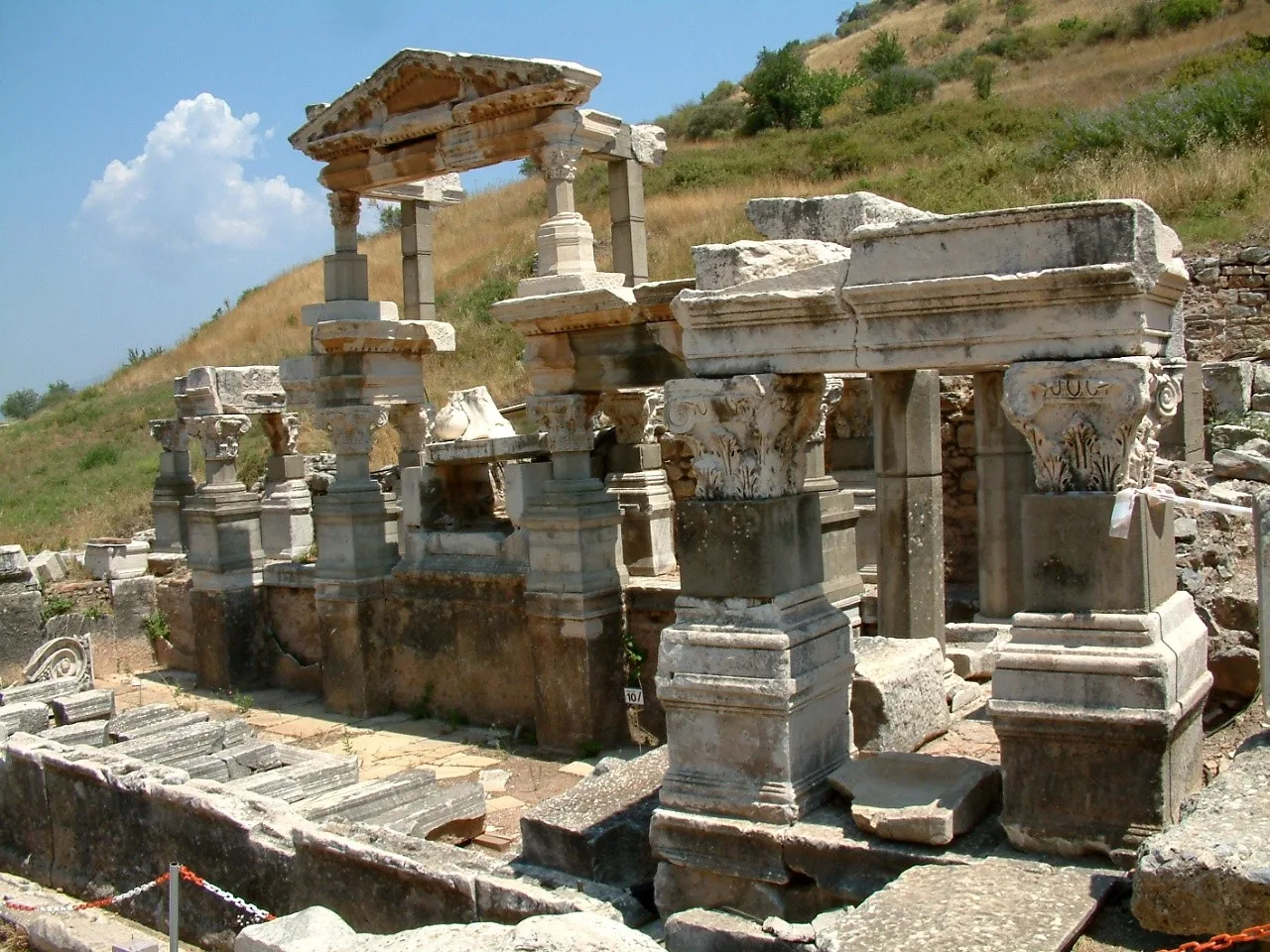
Let’s explore the rich history, vibrant culture and fascinating lifestyle of Ephesus.
Historical Background of Ephesus
Foundation and Early History
Ephesus has a long and storied history dating back to the 10th century BC. It was first founded by the Ionian Greeks and quickly grew into a prosperous city due to its strategic location on the Aegean coast. The city flourished under the rule of the Lydians and Persians, but it was during the Hellenistic period that Ephesus truly flourished.
During this time, Ephesus became an important trading center, attracting merchants from all over the Mediterranean. The city’s strategic location made it a center for the exchange of goods and ideas, contributing to its cultural diversity and cosmopolitan atmosphere.
Roman Administration and Development
After Ephesus was conquered by the Roman Republic in 129 BC, it came under Roman rule. Under Roman rule, the city experienced a period of significant growth and development. The Romans recognized the importance of Ephesus as a major port city and invested heavily in its infrastructure.
One of the most iconic buildings in Ephesus is the Library of Celsus, built during the Roman period. This magnificent library housed thousands of scrolls and became a symbol of the city’s intellectual and cultural power. Roman influence can also be seen in Ephesus’ grand theater, which can accommodate 25,000 spectators and hosts a variety of performances and events.
Religious significance
Ephesus was not only a center of trade, but also a center of religious activity. The city was home to the Temple of Artemis, one of the Seven Wonders of the Ancient World. This temple was dedicated to the Greek goddess Artemis and attracted pilgrims from far and wide.
Another important religious site in Ephesus is the House of the Virgin Mary, believed to be the final resting place of the Virgin Mary. This sacred site is visited every year by thousands of pilgrims seeking spiritual solace and connection.
Lifestyle and Culture in Ephesus
The lifestyle and culture of Ephesus was influenced by its diverse population and rich history. The city was known for its lively markets, where merchants from different regions gathered to sell their goods. The streets of Ephesus were lined with shops, taverns and public buildings, creating a bustling and lively atmosphere.
The people of Ephesus enjoyed a wide range of cultural activities, including theater, music and sports. The great theater of Ephesus hosted performances of Greek and Roman plays, while the Odeon served as a venue for music concerts. The city also had a stadium where sporting events such as chariot races and gladiatorial fights were held.
Ephesus was a center of learning and intellectual pursuits. The Library of Celsus housed a vast collection of books and served as a meeting place for scholars and philosophers. The city was also home to the famous School of Philosophy, where students from all over the Mediterranean came to study under esteemed philosophers.
Architecture and Urban Planning
Ephesus is famous for its extraordinary architecture and urban planning. The city has been meticulously designed to showcase the splendor and sophistication of ancient civilizations. Let’s explore some of the iconic architectural wonders of Ephesus.
Temple of Artemis
The Temple of Artemis, also known as Artemision, was one of the Seven Wonders of the Ancient World. This magnificent temple was dedicated to the Greek goddess Artemis, goddess of the hunt, wild animals and fertility. The temple was an architectural marvel, containing 127 columns, each standing at an impressive height of 60 feet.
Unfortunately, the Temple of Artemis has been destroyed and rebuilt several times throughout its history. Today only a few ruins remain, but they still offer a glimpse into the splendor of the ancient structure. Visiting the place where the temple once stood allows visitors to appreciate the architectural prowess and religious significance of this ancient wonder.

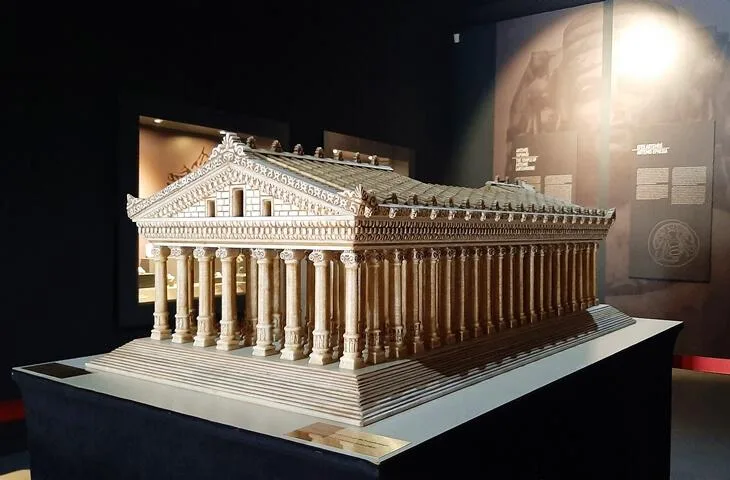
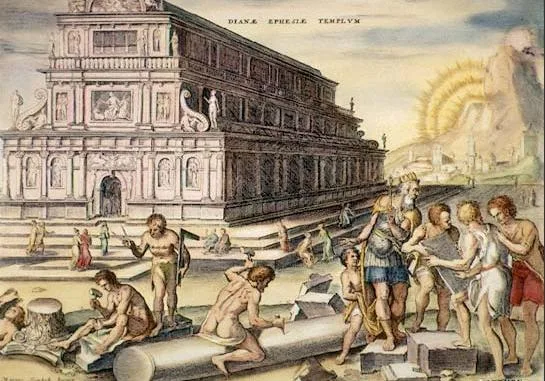
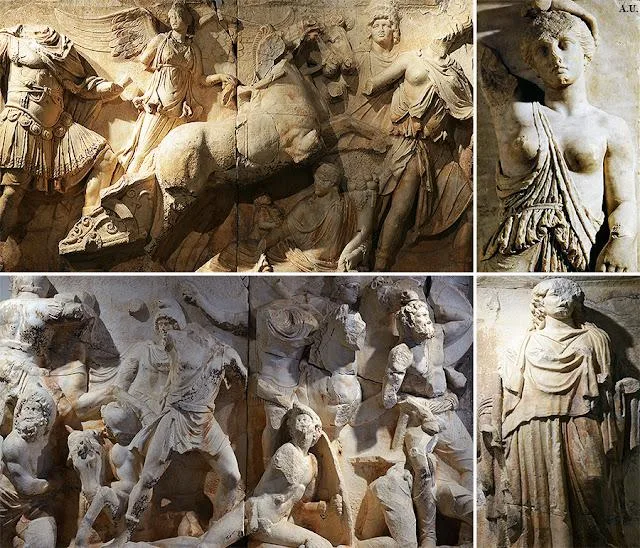
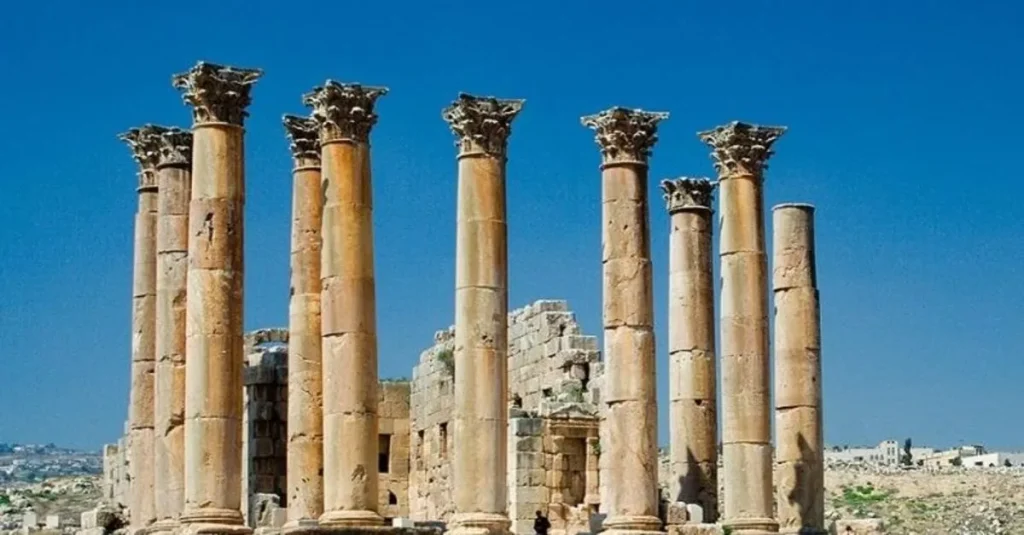

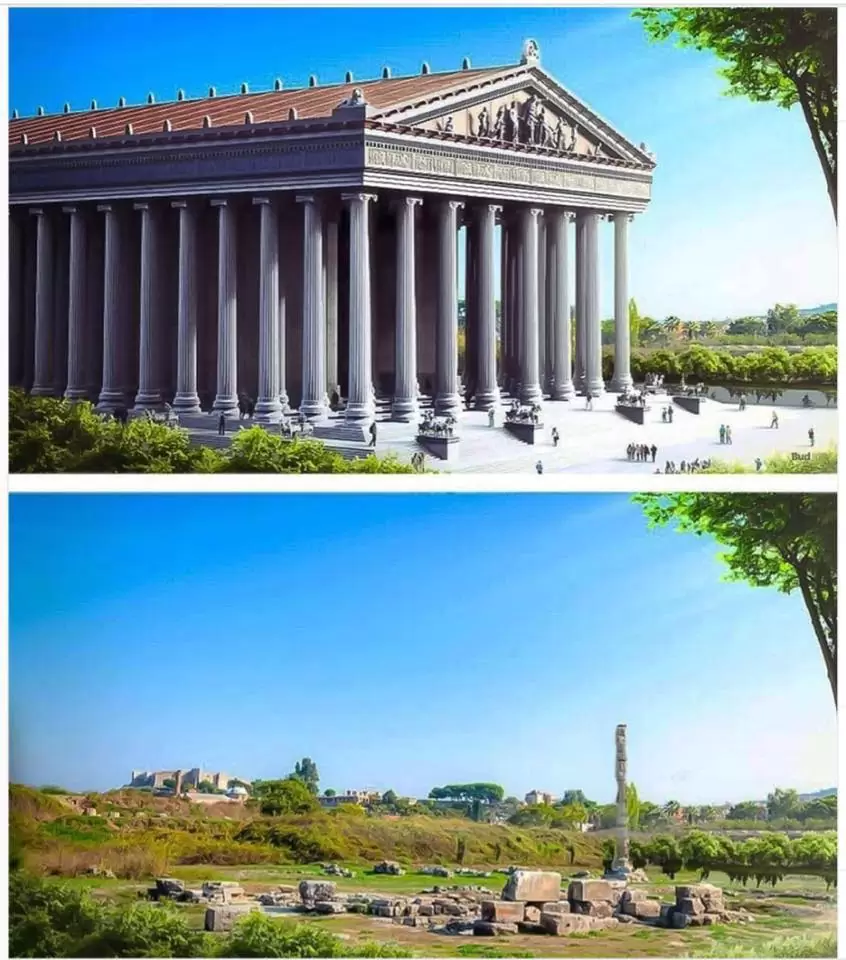
Library of Celsus
The Library of Celsus is one of the most iconic buildings in Ephesus. Built during the Roman period, this magnificent library served as a symbol of the city’s intellectual and cultural achievements. Home to thousands of scrolls and books, it is one of the largest and most impressive libraries of the ancient world.
The façade of the Library of Celsus is a testament to the architectural genius of the Romans. The two-story structure features intricately carved columns, sculptures and reliefs that showcase the artistic mastery of the period. The interior of the library is decorated with beautiful frescoes and mosaics, creating a serene and scientific atmosphere.

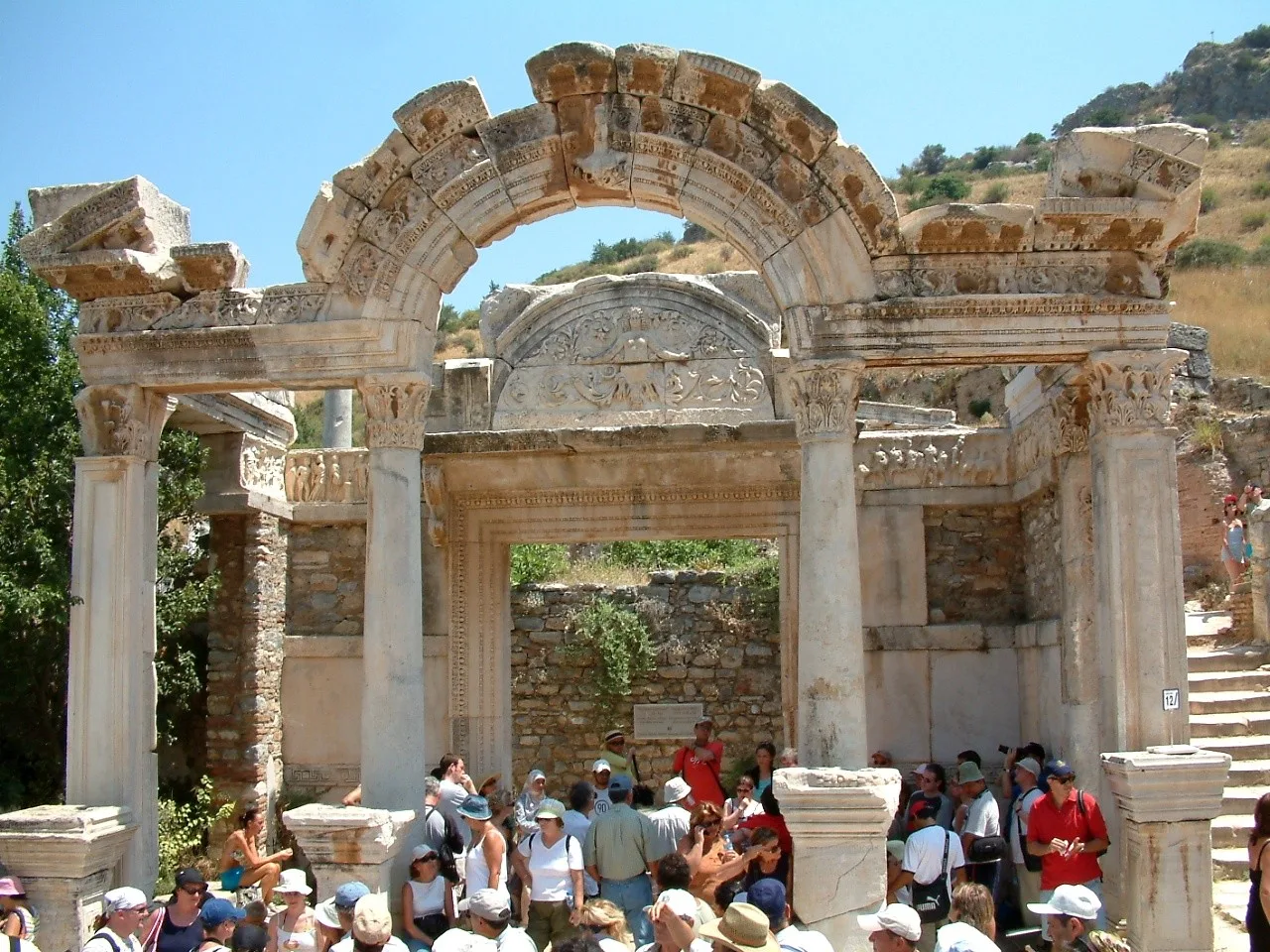


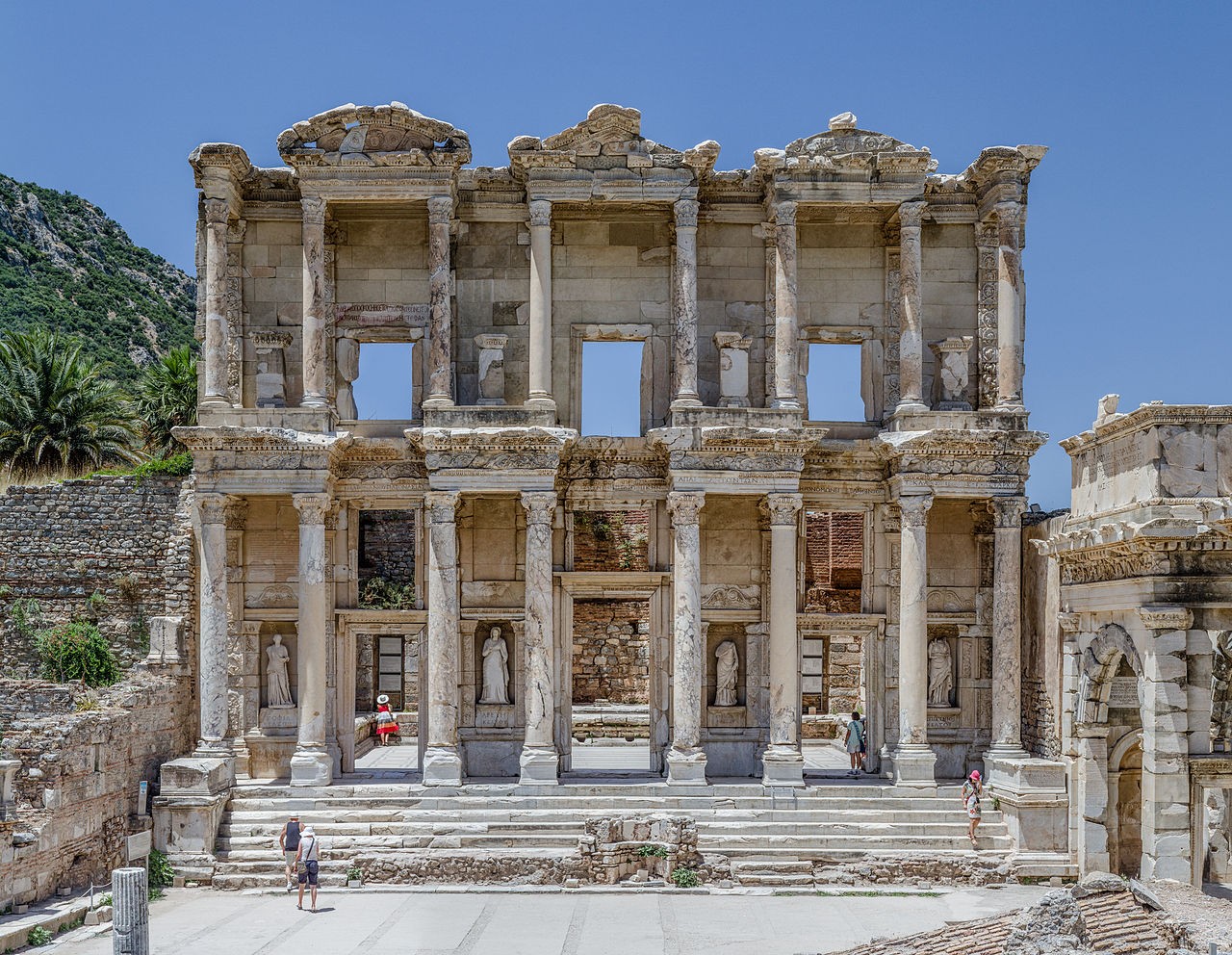
Slope Houses
The Terrace Houses, also known as “Houses of the Rich”, offer a fascinating glimpse into the daily lives of the wealthy residents of Ephesus. They are luxurious residences built on terraces, showcasing the wealth and sophistication of the elite.
Featuring intricate mosaics, frescoes and marble decorations, the Terrace Houses offer a glimpse into the artistic and architectural tastes of the period. The houses are equipped with advanced heating systems, indoor plumbing and beautifully landscaped gardens, emphasizing the sophisticated urban planning and engineering skills of the ancient Ephesians.
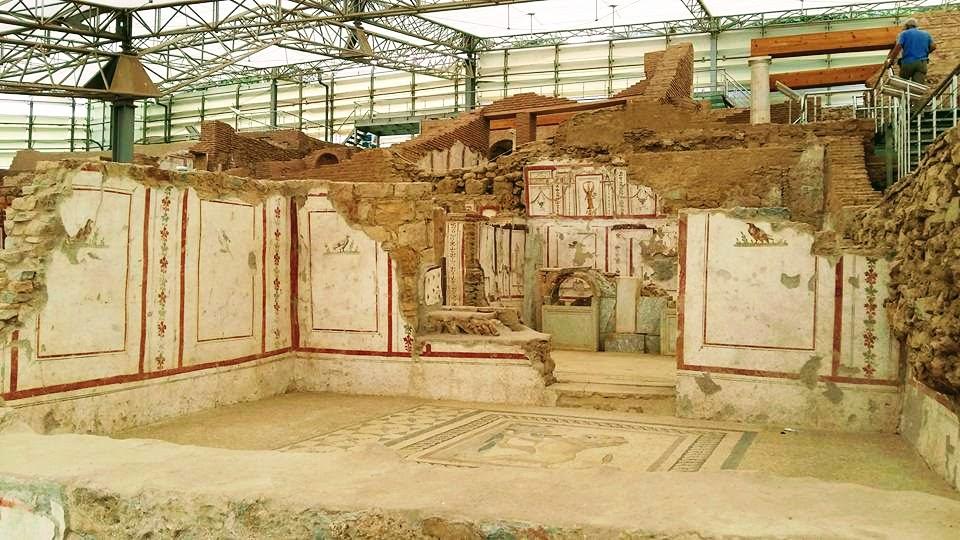


Public Baths
In ancient Ephesus, public baths were an integral part of daily life. These communal bath complexes served as social centers where people gathered to relax, socialize and purify themselves. The baths were not only centers for hygiene, but also for entertainment and recreation.
The baths of Ephesus were large buildings with hot and cold pools, saunas, massage rooms and exercise areas. The baths were adorned with beautiful mosaics, marble decorations and sculptures, creating a luxurious and serene environment. The baths were an important part of the social fabric of Ephesus, where people from all walks of life gathered to relax and rejuvenate.
Daily Life in Ephesus
Ephesus was not only a center of architectural wonders, but also a vibrant city where people lived, worked and enjoyed their daily lives. Let’s explore various aspects of daily life in Ephesus, including food and drink, entertainment and leisure, education and culture, and the role of women in society.
Food and Drink
The people of Ephesus had a varied and delicious cuisine. The city’s proximity to the Aegean Sea ensured an abundance of fresh seafood, which formed the basis of the local diet. Fish, octopus and mussels were often grilled or cooked in delicious sauces.
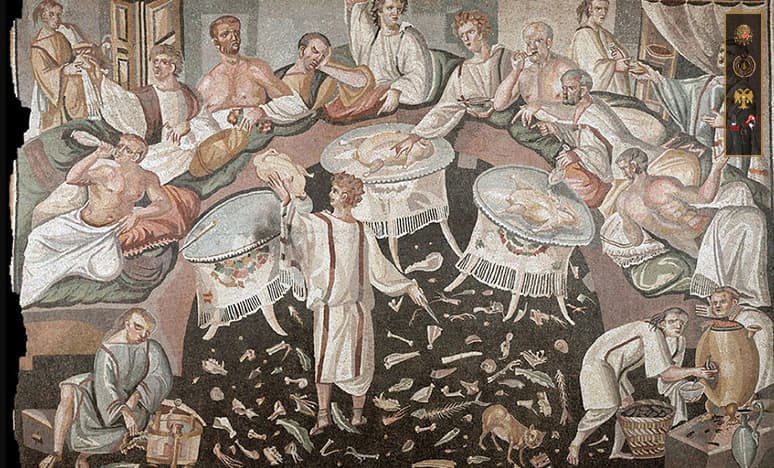

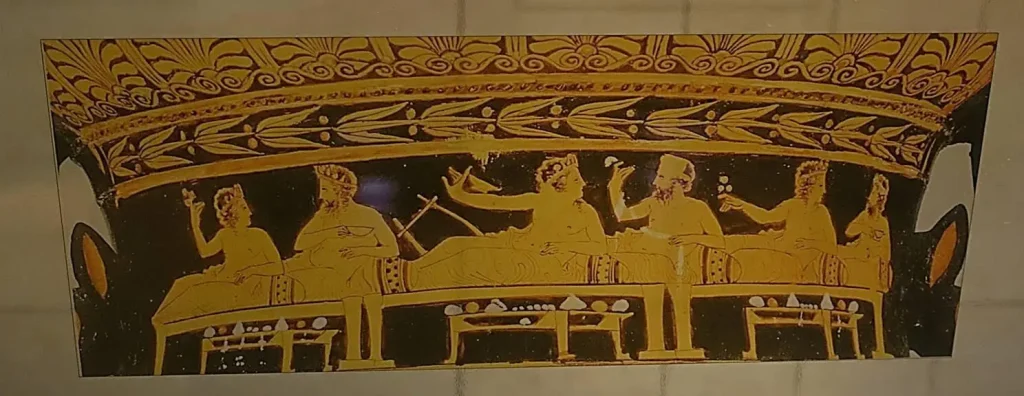

In addition to seafood, the people of Ephesus grew a variety of crops such as wheat, barley, olives and grapes. Bread, olive oil and wine were staples. Ephesus was also known for its honey production, which was used as a sweetener in various dishes and drinks.
Entertainment and Music
Ephesus was a city that valued entertainment and music. Ephesus’ grand theater, with a capacity for thousands of spectators, was a center for theatrical performances, music concerts and gladiatorial fights. A smaller theater, the Odeon, hosted musical performances and smaller-scale events.

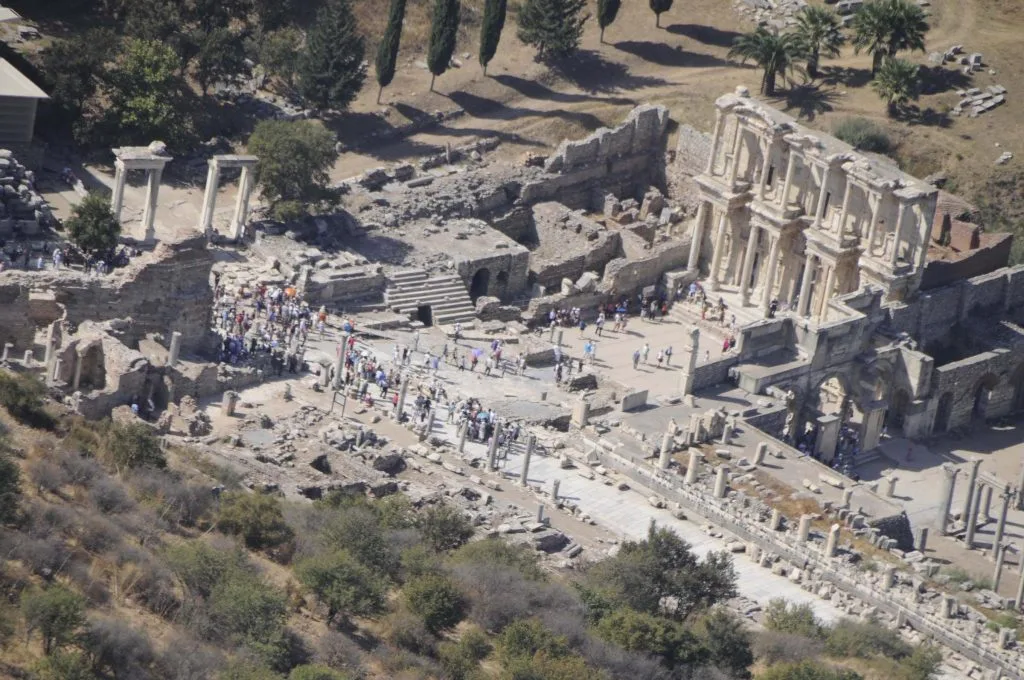
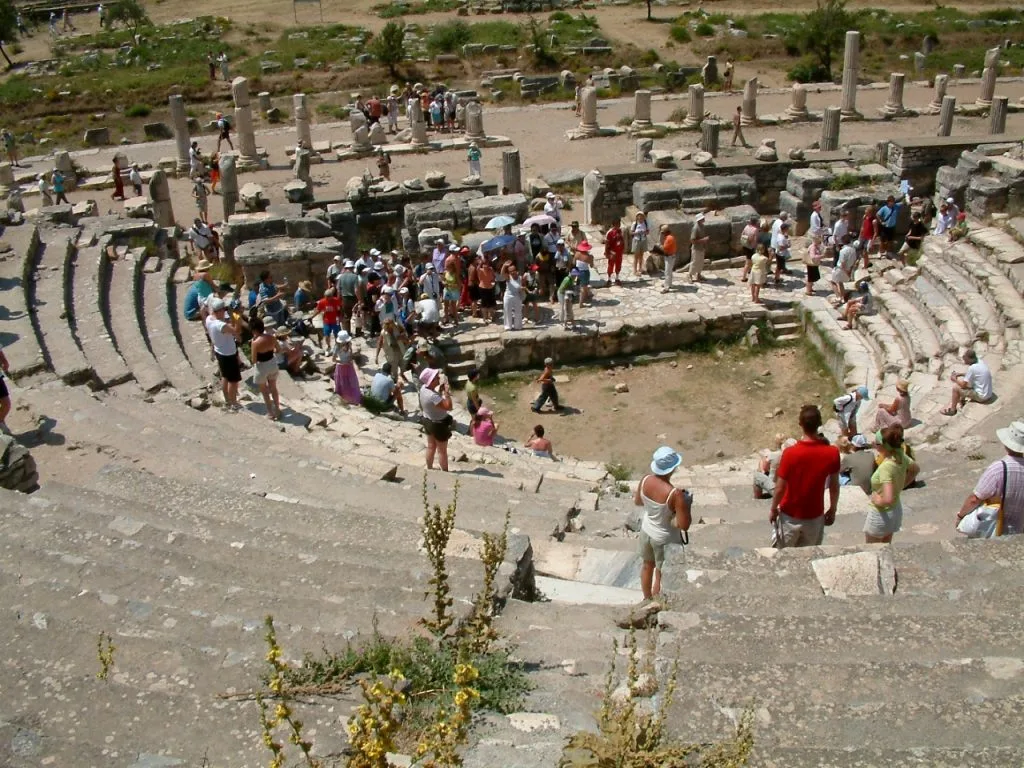
Sports and athletic competitions were also popular forms of entertainment in Ephesus. The city had a stadium where chariot races and athletic competitions were held. Ephesians also enjoyed various outdoor activities such as hunting, horseback riding and fishing.
Education and Culture
Education played an important role in Ephesian society. The city was home to the famous School of Philosophy, where students from all over the Mediterranean came to learn from respected philosophers. The Library of Celsus served as a center of learning, attracting scholars and intellectuals from far and wide.
Ephesus was a melting pot of cultures and ideas, which contributed to its vibrant cultural scene. The city hosted festivals, theater performances and music concerts that showcased the artistic talents of the Ephesians. Ephesians also valued literature and poetry; many famous writers and poets came from the city.
Religion and Spirituality
Religion played an important role in the daily lives of the Ephesians. The city was home to various temples and religious sites, including the Temple of Artemis, one of the Seven Wonders of the Ancient World. Ephesians worshipped a pantheon of gods and goddesses, including Artemis, Zeus and Dionysus.
Religious ceremonies and festivals were an integral part of Ephesian life. People gathered in temples to pray and offer sacrifices, seeking the favor of the gods. Religious ceremonies were accompanied by music, dance and processions, creating a sense of community and spiritual connection.
The Role of Women in Ephesus
Ephesus was a city where women played important roles and were influential in various aspects of society. Let us explore different aspects of the role of women in Ephesus, including their presence in mythology and religion, their participation in public life, their involvement in business and commerce, and their rights and freedoms.

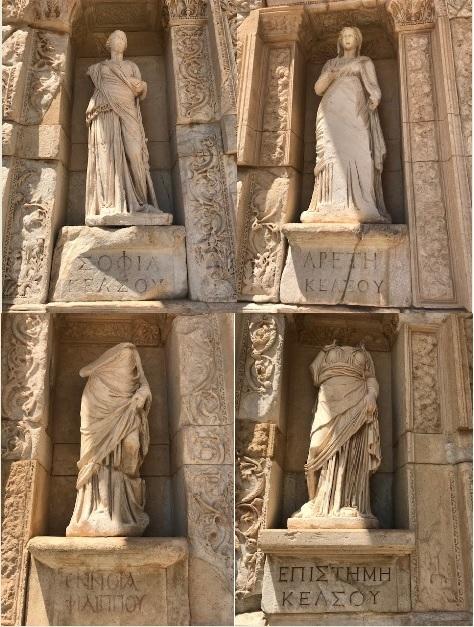

Women in Mythology and Religion
Women played important roles and held positions of power in the mythology and religion of Ephesus. The city was known for its devotion to the goddess Artemis, who was revered as the patroness of women and protector of childbirth. The cult of Artemis was central to Ephesian society and women played an active role in the religious rituals and ceremonies associated with the goddess.
The Temple of Artemis, one of the Seven Wonders of the Ancient World, is a testament to the importance of women in Ephesian mythology and religion. Women served as priestesses and played vital roles in the worship of Artemis, ensuring the continuity of religious practices and traditions.
Women in Public Life
Although men predominantly held power in public life, women in Ephesus still found ways to participate and exert influence. Wealthy and influential women could exercise their power through their husbands or male relatives, often behind the scenes. They shaped decisions and policies by providing advice and support.
Some women in Ephesus, especially those from prominent families, had access to education and could engage in intellectual pursuits. They participated in philosophical discussions, attended lectures and contributed to the cultural and intellectual life of the city.
Women in Business and Commerce
Ephesus was a bustling commercial center and women played an active role in business and commerce. They were involved in a variety of economic activities, including manufacturing, textile production and retailing. Women engaged in weaving, dyeing and embroidery, producing textiles that were highly sought after in the region.
Some women in Ephesus owned and managed businesses, including shops and workshops. They traded goods, negotiated contracts and supervised financial transactions. Women’s involvement in business and trade contributed to the economic prosperity of the city and their financial independence.
Women’s Rights and Freedoms
Women in Ephesus enjoyed certain rights and freedoms not common in other ancient societies. Although their roles were primarily centered around the home and family, they had the ability to own property, inherit wealth and engage in economic activities.
Marriage was an important institution in Ephesian society, but women had some power to choose their spouses. Divorce was also possible, although it required legal proceedings and the attendance of witnesses. Women had the right to seek divorce if their husbands mistreated or abused them.
The women of Ephesus had access to health care and could seek medical help from female physicians and midwives. They had some control over their reproductive health and could make decisions about childbirth and family planning.
The Role of Men in Ephesus
Men in Mythology and Religion
In the ancient city of Ephesus, men played an important role in various aspects of society such as mythology, religion, public life, business, commerce, and the exercise of rights and freedoms. This article will examine different aspects of men’s roles in Ephesus and shed light on their contributions and influence.
In the world of mythology and religion, men held important positions as gods, heroes and priests. Ephesus was home to the magnificent Temple of Artemis, one of the Seven Wonders of the Ancient World. Artemis, the goddess of the hunt and fertility, was highly revered in Ephesus and men played an important role in her worship.
Men served as priests in the temple, administering the rites, offering sacrifices and ensuring the proper functioning of religious ceremonies. These priests were responsible for maintaining the spiritual connection between the people of Ephesus and the divine realm. Their role was vital in maintaining the religious traditions and beliefs of the city.
Men in Public Life
Ephesus was a bustling city with a well-structured political system. Men had power and authority in the administration of the city-state. They participated in the assembly where laws, policies and decisions on public affairs were made. Men had the right to vote and actively participate in the democratic process.
Leading figures in Ephesus could also serve as magistrates, responsible for maintaining law and order, settling disputes and upholding justice. These magistrates played a crucial role in ensuring the proper functioning of the city and protecting the rights and freedoms of its inhabitants.
Men in Business and Trade
Ephesus was a thriving commercial center, known for its bustling markets and trade routes. Men played an important role in the city’s economic prosperity by engaging in business and trade. They engaged in a variety of occupations, including merchants, artisans, craftsmen and traders.
Men in Ephesus were engaged in the production and trade of goods such as textiles, pottery, jewelry and agricultural products. They contributed to the economic growth and prosperity of Ephesus by establishing trade networks both within the city and with other regions.
Rights and Freedoms of Men
In Ephesus, men had certain rights and freedoms protected by law. They had the right to own property, engage in trade and participate in politics. Men also had the right to an education that enabled them to acquire the knowledge and skills necessary for their chosen professions.
In addition, men had the right to marry and start a family. As husbands, fathers and heads of households, they played a very important role in the social structure of Ephesus. Men were expected to provide for their families and ensure their well-being.
The Impact of Ephesus on the World
Cultural and Architectural Impacts
One of the most important cultural influences of Ephesus is its relationship with the Greek and Roman civilizations. The city served as a melting pot of different cultures, blending elements of Greek and Roman architecture, art and literature. The iconic Library of Celsus, an impressive structure housing thousands of scrolls, stands as a testament to the intellectual and cultural importance of Ephesus.
Ephesus’ architectural style also had a profound influence on later civilizations. The city’s well-preserved ruins reveal the mastery of ancient engineers and architects. The great theater of Ephesus, with a capacity for thousands of spectators, became a model for theaters in other parts of the world. The innovative use of columns, arches and intricate carvings in the architecture of Ephesus influenced the development of architectural styles in later periods.
Trade and Industry
Ephesus was a bustling center of trade and commerce, serving as a vital hub for the exchange of goods and ideas. The city’s strategic location on the Aegean coast made it an ideal trading port connecting Asia Minor to other parts of the Mediterranean.
Ephesus’ trade routes stretched far and wide, facilitating the exchange of goods such as textiles, ceramics, spices and precious metals. The city’s markets overflowed with merchants from different cultures, creating a cosmopolitan atmosphere that encouraged cultural exchange and economic growth.
Ephesus also played an important role in the development of monetary and banking systems. The city minted its own coins, which were widely used in commercial transactions. Ephesus’ efficient banking system contributed to the city’s economic prosperity by facilitating secure financial transactions.
Religious and Philosophical Ideas
Ephesus was a center of religious and philosophical ideas that had a significant impact on the world’s spiritual and intellectual landscape. The city was home to the Temple of Artemis, one of the Seven Wonders of the Ancient World. The worship of Artemis, goddess of the hunt and fertility, attracted pilgrims from far and wide, nurturing a diverse and vibrant religious community.
Ephesus is also associated with the spread of early Christianity. The Apostle Paul visited Ephesus and founded a Christian community that later became an important center for the early Christian movement. The influence of Ephesus on the development of Christian theology and the spread of the gospel cannot be overstated.
In addition to religious ideas, Ephesus was also a center of philosophical thought. The city was home to famous philosophers such as Heraclitus and Xenophanes, who contributed to the development of philosophical ideas that shaped Western thought.
Heritage and Conservation
Despite the passage of time, Ephesus’ heritage continues to be preserved and celebrated. The city’s well-preserved ruins serve as a window to the past, allowing visitors to experience the splendor and grandeur of ancient Ephesus.
The conservation efforts of archaeological teams and local authorities have ensured that Ephesus’ cultural heritage remains intact. The meticulous restoration of structures such as the Library of Celsus, the Temple of Artemis and the theater has ensured that future generations will appreciate the city’s architectural splendor.
Ephesus is also a UNESCO World Heritage Site, further emphasizing its global significance and value. This designation is a testament to the cultural and historical value of the city, ensuring that it is preserved for future generations to appreciate and learn from.
Conservation and Restoration Works
Early Period Excavations and Conservation Studies
The conservation and restoration of Ephesus has been ongoing for centuries, with early excavations and conservation efforts laying the foundation for the efforts we see today. The first systematic excavations at Ephesus began in the late 19th century, led by archaeologists such as John Turtle Wood and Otto Benndorf.
These early excavations focused on uncovering the architectural wonders of the ancient city, including the Library of Celsus, the Temple of Artemis and the great theater. The meticulous documentation and conservation of these structures have provided valuable insights into the history and architectural achievements of the city.
Modern Restoration Techniques
In recent years, modern restoration techniques have been introduced to ensure the long-term preservation of Ephesus. These techniques combine traditional craftsmanship with scientific advances to restore and stabilize ancient structures.
One of the major restoration projects in Ephesus is the ongoing work on the façade of the Library of Celsus. The restoration team is using a combination of original materials and modern techniques to recreate missing elements and strengthen the structure’s stability. This approach aims to strike a balance between authenticity and structural integrity.
Another important restoration effort is the ongoing work at the Temple of Artemis. Although only a few columns and fragments remain, the restoration team is meticulously analyzing historical records and archaeological evidence to recreate the original temple. In the process, 3D modeling and advanced imaging techniques are used to visualize the temple’s past splendor.
Challenges and Controversies
Conservation and restoration work at Ephesus has not been without challenges and controversies. Chief among these challenges is the delicate balance between restoration and conservation. While restoration aims to recreate the original state of buildings, conservation focuses on preserving the authenticity and integrity of existing remains. Striking the right balance between these two objectives requires careful consideration and expertise.
Another challenge is the impact of tourism on the conservation of Ephesus. The influx of visitors can put pressure on ancient structures, leading to wear and tear. To mitigate this, visitor management strategies such as controlled access and protective measures are implemented to ensure the long-term preservation of the site.
Debates also arise regarding the use of modern materials in restoration. Some argue that the use of modern materials jeopardizes the authenticity of buildings, while others believe that they are necessary to ensure their durability and longevity. These debates highlight the complexity involved in restoration work and the need for careful decision-making.
Future Conservation Plans
Looking ahead, future conservation plans for Ephesus focus on continued research, conservation and sustainable tourism. Ongoing archaeological excavations aim to uncover new insights into the city’s history and expand our understanding of its cultural significance.
Conservation work will prioritize the stabilization and maintenance of existing remains, ensuring their long-term preservation. This includes regular monitoring, documentation and the implementation of preventive measures to protect structures from natural elements and human impact.
Sustainable tourism practices will be crucial in managing visitor numbers and minimizing impact on the site. This includes the development of visitor education programs, the creation of designated trails and the implementation of environmentally friendly practices.
Cooperation between local authorities, archaeological teams and international organizations will be crucial in implementing these conservation plans. By working together, Ephesus can be preserved for future generations to appreciate and learn from its rich cultural heritage.
Tourism and Visiting Ephesus Today
Popular Attractions and Sites
Ephesus is home to numerous attractions and sites that showcase its historical and cultural significance. The most iconic and must-visit attraction is the Library of Celsus, known for its stunning facade and architectural beauty. This ancient library once housed thousands of scrolls and played a vital role in the spread of education and knowledge.
Another important site is the Temple of Artemis, one of the Seven Wonders of the Ancient World. Although only a few columns and fragments remain, it is still a sight to behold. The Grand Theater is another highlight of Ephesus with a capacity of 25,000 spectators. In ancient times it hosted a variety of performances and events.
Other attractions include the Hillside Houses, offering a glimpse into the lives of Ephesus’ wealthy inhabitants, and the Temple of Hadrian, decorated with intricate reliefs and sculptures. Exploring ancient streets such as Marble Street and Curetes Street allows visitors to immerse themselves in the atmosphere of the ancient city.
Practical Information for Visitors
When planning a visit to Ephesus, it is essential to consider some practical information to ensure a smooth and enjoyable experience. Here are a few important points to keep in mind:
- Opening Hours: Ephesus is open from early morning until late afternoon. It is advisable to arrive early to avoid crowds and get the most out of your visit.
- Guided Tours: To fully understand the historical and cultural significance of the area, it is highly recommended to hire a licensed tour guide. Guides provide valuable insights and bring the ancient city to life through their knowledge and storytelling.
- Comfortable Clothing: As Ephesus is an open-air archaeological site, it is advisable to wear comfortable shoes and clothes suitable for walking and exploring. Sunscreen, hats and sunglasses are also very important, especially in summer when temperatures can be high.
- Water and Snacks: As there are limited food and drink options within the site, it is advisable to carry a bottle of water and snacks with you. Staying hydrated and energized will make for a more enjoyable visit.
- Photography: Photography is allowed in Ephesus, so remember to bring your camera or smartphone to capture the beauty of the ancient ruins. However, it is important to be respectful and avoid touching or climbing on the structures.
Safety and Accessibility
Efes’te ziyaretçilerin güvenliği ve erişilebilirliği son derece önemlidir. Alanın bakımı iyi yapılmakta ve güvenli bir ziyaret sağlamak için güvenlik önlemleri alınmaktadır. Bununla birlikte, antik kenti keşfederken yetkililer tarafından sağlanan yönergelere uymak ve dikkatli olmak önemlidir.
Akılda tutulması gereken bazı güvenlik ipuçları:
- Stay on Designated Paths: Stick to the designated paths and avoid entering restricted areas. These areas may be unstable or undergoing restoration work.
- Watch Your Step: Ephesus has hilly terrain, so it is important to watch your step and be aware of potential tripping hazards.
- Stay Hydrated: As mentioned earlier, it is very important to stay hydrated, especially during the hot summer months. Carry a water bottle and drink plenty of fluids to avoid dehydration.
- Follow Safety Signs: Pay attention to safety signs and instructions provided by the authorities. These signs are there to ensure the well-being of visitors.
In terms of accessibility, Ephesus can pose some challenges for individuals with mobility issues. The ancient city has uneven surfaces and steps that can make it difficult for wheelchair users or those with reduced mobility to navigate. However, efforts have been made to improve accessibility, such as the installation of ramps in certain areas. It is recommended that you contact the property in advance to inquire about accessibility options and plan accordingly.
Responsible Tourism and Conservation
As visitors to Ephesus, it is our responsibility to engage in responsible tourism practices to ensure that this ancient site is preserved for future generations. Here are some ways we can contribute to conservation efforts:
- Respect the Site: Respect ancient ruins by avoiding touching or climbing on the structures. These structures are fragile and can be damaged by human contact.
- Follow the Rules: Follow the rules and regulations set by the authorities. These rules are in place to protect the site and ensure the safety of visitors.
- Dispose of Your Waste Properly: Use designated waste bins and avoid littering. Keeping the site clean and free of litter helps maintain its beauty and integrity.
- Support Local Communities: Engage with the local community by visiting nearby shops, restaurants and accommodation that promote sustainable practices. This supports the local economy and promotes the conservation of the area.
- Educate Yourself: Take the time to learn about the history and importance of Ephesus before your visit. This will increase your appreciation of the region and its cultural heritage.
By practicing responsible tourism, we can contribute to the long-term preservation of Ephesus and ensure that future generations will continue to marvel at these historical wonders.
Frequently Asked Questions
- When did the first excavations of Ephesus begin?
- The first systematic excavations at Ephesus began in the late 19th century.
- What are some modern restoration techniques used in Ephesus?
- Modern restoration techniques at Ephesus include the use of original materials, 3D modeling and advanced imaging techniques to recreate missing elements and visualize the original form of the structures.
- What are some of the challenges to preserving Ephesus?
- Challenges in the preservation of Ephesus include finding the balance between restoration and conservation, managing the impact of tourism, and addressing the controversy surrounding the use of modern materials.
- What are the future conservation plans for Ephesus?
- Future conservation plans for Ephesus include continued research, conservation efforts and sustainable tourism practices. These plans aim to uncover new knowledge, stabilize existing ruins and manage visitor impact.
- How can Ephesus be preserved for future generations?
- Ephesus can be preserved for future generations through ongoing research, conservation efforts, sustainable tourism practices and cooperation between local authorities and international organizations
- What are some modern restoration techniques used in Ephesus?
- Modern restoration techniques at Ephesus include the use of original materials, 3D modeling and advanced imaging techniques to recreate missing elements and visualize the original form of the structures.
- What are some of the challenges to preserving Ephesus?
- Challenges in the preservation of Ephesus include finding the balance between restoration and conservation, managing the impact of tourism, and addressing the controversy surrounding the use of modern materials.
- What are the future conservation plans for Ephesus?
- Future conservation plans for Ephesus include continued research, conservation efforts and sustainable tourism practices. These plans aim to uncover new knowledge, stabilize existing ruins and manage visitor impact.
- How can Ephesus be preserved for future generations?
- Ephesus can be preserved for future generations through ongoing research, conservation efforts, sustainable tourism practices and cooperation between local authorities and international organizations
- What is the importance of the Library of Celsus in Ephesus?
- The Library of Celsus was a symbol of intellectual and cultural importance in Ephesus. It housed thousands of scrolls and served as a center of learning and knowledge.
- How did Ephesus influence the development of architecture?
- Ephesus demonstrated innovative architectural techniques such as the use of columns, arches and intricate carvings. Its great theater became a model for theaters in other parts of the world.
- What role did Ephesus play in trade and commerce?
- Ephesus was a vital trading port connecting Asia Minor with the rest of the Mediterranean. The city’s markets were filled with merchants from different cultures, facilitating the exchange of goods.
- Was Ephesus associated with any religious movement?
- Yes, Ephesus is associated with the spread of early Christianity. The Apostle Paul visited Ephesus and founded a Christian community that became an important center for the early Christian movement.
- How was Ephesus preserved and celebrated?
- Ephesus has been meticulously preserved and its ruins are open to visitors. The city is a UNESCO World Heritage Site, ensuring its preservation for future generations to appreciate and learn from. The efforts of archaeological teams and local authorities have led to the restoration and maintenance of structures such as the Library of Celsus, the Temple of Artemis and the theater.
- Which were the main gods worshipped in Ephesus?
- The main gods worshipped in Ephesus were Artemis, Zeus and Dionysus. Learn more about the gods of Ephesus.
- Did men have any political rights in Ephesus?
- Yes, men in Ephesus had political rights. They could attend the assembly, vote and serve as magistrates.
- What were the main occupations of the men in Ephesus?
- Men in Ephesus were engaged in a variety of occupations, including merchants, artisans, craftsmen and traders. They were engaged in the production and trade of goods such as textiles, pottery and jewelry.
- Were men allowed to own property in Ephesus?
- Yes, men in Ephesus had the right to own property. Owning property was an important aspect of their social and economic status.
- What were the rights and responsibilities of the men in the Ephesian families?
- Men in Ephesian families were expected to be the breadwinner and head of the household. They had the responsibility to ensure the welfare of their families and to protect the social structure.
- Did women have any political rights in Ephesus?
- Women in Ephesus generally did not have direct political rights, such as voting or holding public office. Their participation in political affairs was often limited to indirectly influencing decisions through family or social connections.
- What were the main occupations of women in Ephesus?
- The main occupations of women in Ephesus were usually centered around domestic tasks, including housekeeping, childcare, and activities such as weaving, spinning, or producing goods for the household economy. Some women from more affluent families may have been involved in the supervision of slaves or in the management of family estates.
- Were women allowed to own property in Ephesus?
- Women in Ephesus often had limited rights to own property independently. Their ability to own property often depended on their marital status and legal arrangements within the family. However, widows or women with significant wealth or status may have had more autonomy in acquiring property.
- What were the rights and responsibilities of women in Ephesian families?
- Women in Ephesian families were primarily responsible for running the household, raising children and supporting their husbands in their role as head of household. They were expected to maintain domestic life, including tasks such as cooking, cleaning and textile production. Women also played important roles in transmitting cultural and religious values to the next generation.
- When is the best time to visit Ephesus?
- The best time to visit Ephesus is in spring and fall when the weather is mild and beautiful. The summer months can be quite hot and the winter months can be rainy.
- How long does it take to explore Ephesus?
- It usually takes about 3-4 hours to explore the main sights of Ephesus. However, if you want to delve deeper into the history and culture of the city, a full day is recommended.
- Can I visit the Temple of Artemis?
- Unfortunately, the Temple of Artemis no longer stands. Only a few ruins remain and it is not open to the public. However, you can visit the place where the temple once stood and learn about its historical significance.
- Is the House of the Virgin Mary accessible to all visitors?
- Yes, the House of the Virgin Mary is accessible to all visitors. However, please note that this is a religious place and visitors are expected to dress modestly and show respect.
- Are guided tours available in Ephesus?
- Yes, guided tours are available in Ephesus. Hiring a knowledgeable guide can enhance your experience and provide you with valuable insight into the history and culture of the city.
My Thoughts About the Ancient City of Ephesus
The ancient city of Ephesus is like a treasure trove that carries the traces of the past and the collective heritage of humanity, stretching from the depths of history to the present day. This ancient city is located on the western coast of Anatolia, on the shores of the Aegean Sea and dates back to the 10th century BC. Ephesus flourished as a major port city during the Ancient Greek and Roman periods and became one of the most important trading centers of the Eastern Mediterranean.
The architectural richness of Ephesus is also remarkable. World-famous structures such as the Temple of Artemis are among the fascinating ruins in the ancient city. These structures carry the splendor and mastery of the ancient period to the present day.
Ephesus is of great cultural and religious importance. Ephesus became an important center in the history of Christianity when St. Paul came here and spread Christianity. Christian buildings such as the Basilica of St. John also reflect the cultural richness of the ancient city.
Today, the ancient city of Ephesus offers visitors a rich heritage of history and culture. Tourists can wander among the ancient ruins, discovering the lifestyle and culture of Ephesus while tracing the traces of the past. This ancient city attracts millions of visitors every year with its warm climate and impressive scenery.
If you haven’t read it yet, you can also check out our review of the Ancient City of Ephesus -Central History…
Architect: Unknown (Antiquity)
Architectural Style: Ancient Greek and Roman
Year: 10th century BC (Foundation)
Location: West coast of Anatolia, on the shores of the Aegean Sea, Turkey
Discover more from Dök Architecture
Subscribe to get the latest posts sent to your email.








